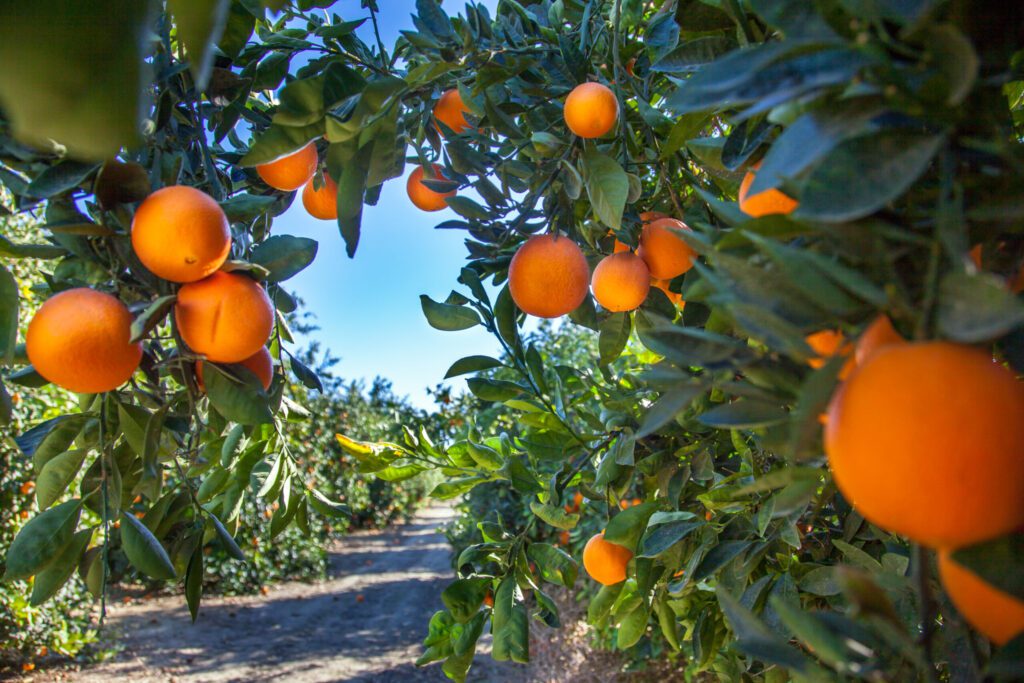Florida Citrus Struggling, but Still a Leading Crop
by ERIKA ALDRICH
Sponsored by Farm Credit of Central Florida
Citrus is one of The Sunshine State’s leading agricultural products, and despite challenges presented by citrus greening and more, Florida’s citrus growers are still optimistic about the future of citrus. Oranges were first introduced to the New World and Florida by explorers like Christopher Columbus and Ponce de Leon in the 1400s and 1500s, and grapefruit arrived in the early 1800s, according to Citrus Mutual. In 1915, production of citrus in Florida reached the milestone of 10 million boxes. In 1950, it reached 100 million boxes, with the 200 million box milestone following in 1971. The current Florida citrus industry faces serious challenges, but the industry is still fighting.
Citrus Land
In the 2018-2019 season, Citrus Mutual maintains that Florida had over 430,000 acres of land dedicated to growing citrus. The latest USDA report for the 2019-2020 season put Florida’s total citrus acreage at 419,452 acres, a drop of 3 percent. While Florida citrus growers planted 7,885 new acres of citrus, 19,034 acres utilized for citrus production were lost since 2019.
Citrus Production Numbers
Florida’s citrus industry has been dealing with dwindling citrus production numbers since the arrival of citrus greening, a deadly citrus disease, in 2005. USDA’s NASS reported the total production of citrus for the 2018-2019 crop year to be 77.4 million boxes. In the 2019-2020 crop year, the citrus production total amounted to 73.2 million boxes of citrus, a drop of 5 percent.
The first USDA citrus crop forecast for Florida—and the most recent, released in early October—estimated the 2020-2021 citrus crop to be 57 million boxes of citrus, 4.5 million boxes of grapefruit, and 1.1 million boxes of tangelos and tangerines. If those numbers pan out, it will be a 15 percent drop from last season for oranges, a 7 percent drop for grapefruit, and an 8 percent increase for tangelos and tangerines. For comparison’s sake, the highest year of production for Florida citrus was the 1997-1998 crop year where 244 million boxes of citrus were harvested.
The Dollar Worth of Citrus
According to The Florida Department of Agriculture and Consumer Services (FDACS), the total production value of Florida’s oranges in 2017 was $1.07 billion dollars and grapefruit was $136 million. Total cash receipts for Florida’s 2017 citrus industry totaled over $1.03 billion, which was 13.8 percent of the total of all Florida commodities.
For the 2016-2017 season, FDACS maintained the sales on-tree value of the year’s crop was $780 million. The USDA’s National Agricultural Statistics Service (NASS) listed the sales on-tree value of the 2017-2018 citrus crop at $551 million, with a lot of the year’s crop lost to damage from Hurricane Irma in September of 2017. USDA NASS’s Citrus Summary Report listed the total value of production for the 2018-2019 crop year at $902 million, while estimating the preliminary total value for the 2019-2018 crop year to be $728 million.
The Value of Citrus in Florida
While the Florida citrus industry continues to struggle with the devastating effects of citrus greening, the industry is nowhere near throwing in the towel yet. Florida Citrus Mutual maintains that the Florida citrus industry creates approximately 45,000 full-time and part-time jobs and has an impact to the tune of about $8.5 billion to the state’s economy each year.
Scientists, researchers, Extension specialists, government agencies, and citrus growers are all working together to beat citrus greening. Innovations like treatments derived from oak leaves, CRISPR technology, and a citrus-greening fighting peptide derived from Australian finger limes, show that everyone is fighting to overcome citrus greening and revive the Florida citrus industry.


